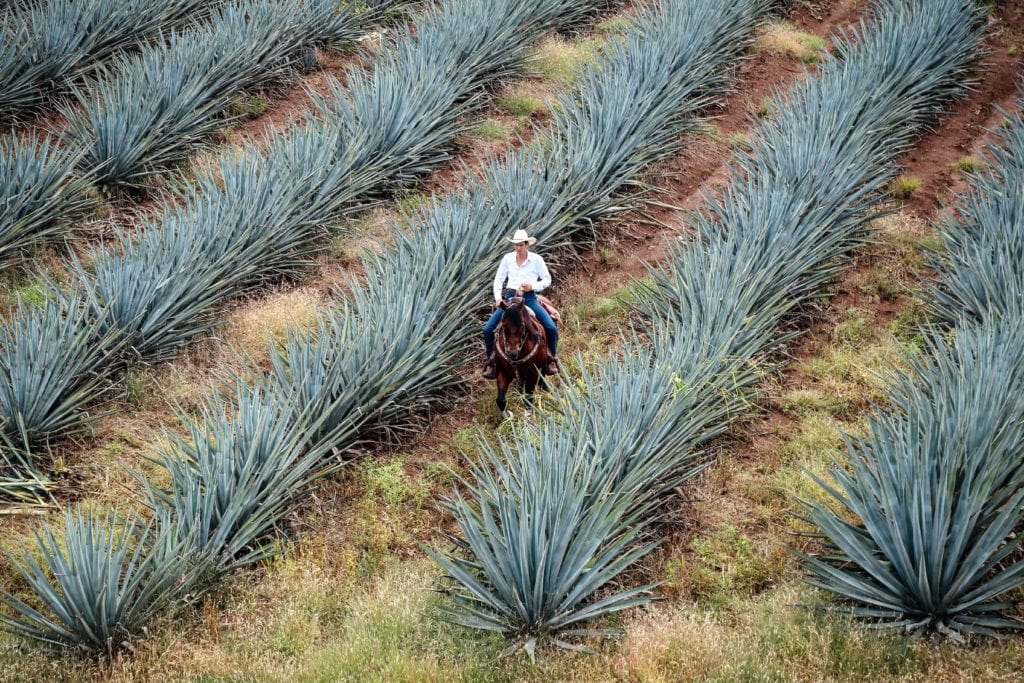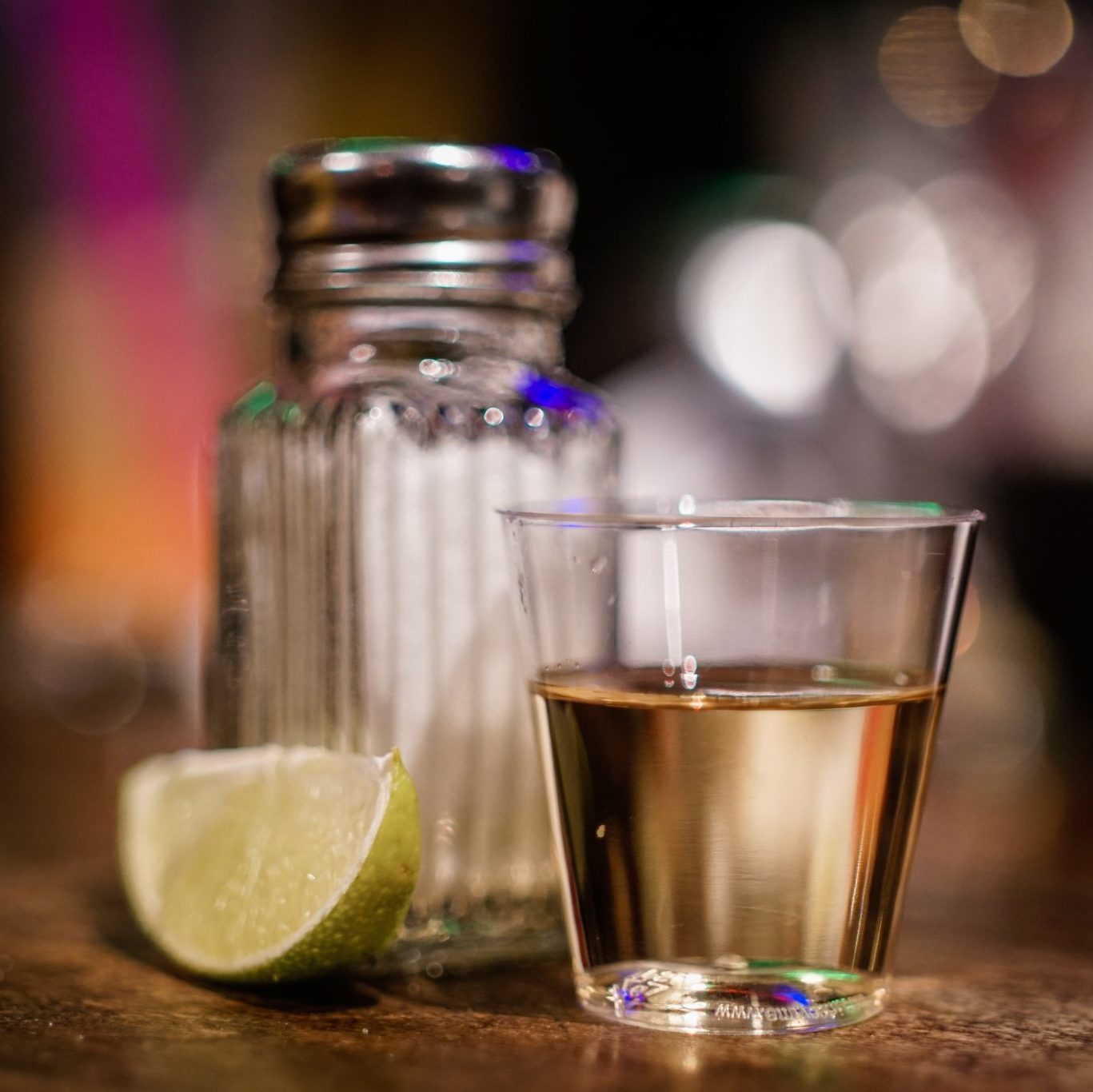Shot glasses at the ready, it’s National Day Tequila Day on the 24th July 2019.
The famous Mexican spirit has inspired songs, artwork and a fair few hangovers over the years and National Tequila Day is an excellent opportunity to celebrate our favourite shot. When creating custom menus for our wedding clients, we very often include tequila on our drinks menu so it’s definitely not just for student parties!
Tequila is named after the small town in Jalisco, Mexico where it was first made. In fact, it has designated location protection and can only be called tequila if it is produced in one of five specific regions in Mexico—Guanajuato, Michoacán, Nayarit, Tamaulipas, and Jalisco. 85,000 acres of Mexico’s vibrant agave landscape in Jalisco is recognised as a UNESCO World Heritage site. Tequila is a mezcal liquor, but not all mezcal liquors are tequila!
What is tequila made from?

It’s made from the blue agave plant, a spiky blue succulent that can reach over 2m in height and takes up to 12 years to mature ready for harvest. To produce tequila, the heart (pinã) of the tequila plant is removed. It’s stripped of its leaves and roasted, then crushed to release the sugary clear liquid called aguamiel, which is then fermented and distilled. Other spirits may then be blended into the mix before the tequila is bottled to be enjoyed. Tequila can only be labelled and sold by that name if blue agave constitutes over half of the fermented sugars in the drink. Premium tequilas are made with 100% blue agave, and labelled as such, but lower quality tequila may include up to 49% cane alcohol or brown sugar alcohol, in which case it is labelled as mixto. The regulatory council allows these lower quality tequilas to be exported in barrels and bottled abroad. Premium tequilas must be bottled within Mexico.
Many of us were first introduced to tequila as a popular shot, accompanied by salt and lemon. However, Mexican people are more likely to sip their tequila than throw it back, appreciating the subtle flavourings of the spirit. Tequila made with agave grown in the highlands of Los Altos has a fresher, grassier flavour than the earthier tequilas made from low ground plants.
There are four main types of tequila:
- Bianco – the white spirit that is bottled straight after distillation or aged for less than two months
- Reposada – the ‘rested’ tequila that has been aged in oak barrels for between two and 12 months
- Añejo – an aged tequila that has been rested in barrels for between one and three years
- Extra-añejo – a premium aged tequila that remains in the barrel for more than three years
As tequila ages in wooden barrels, it becomes mellower and smoother, and like other cask aged spirit, takes on the flavours of the wood. In younger bianco tequila, the agave flavours are more pronounced. Here in the UK, we’re fairly loyal to a few tequila brands, with our favourite being Jose Cuervo – the most popular tequila in the world and the one that most people are familiar with.
Now… about that worm. There are no mythical tales about the worm at the bottom of the tequila bottle – it began as an American marketing ploy in the mid 20th century. The tequila worm is a larva of the Atlas moth, which feeds on the blue agave plant. It’s not thought to bring any addition to the flavours of the tequila, and eating it isn’t a terribly good idea either. You’ve been warned!
Fancy a tequila cocktail?
We’re not dismissing the tequila shot, but sometimes it’s nice to enjoy a longer drink. Tequila features prominently in many classic cocktails, and we’ve put together some recipes for some of our favourites.
Tequila sunrise
Perhaps one of the best-known cocktails in the world, the key to achieving the iconic sunrise is to gently pour over the cocktail without disturbing the grenadine at the bottom. However, even if you mess this step up, it’s still delicious!
You’ll need:
- 2 tsp grenadine
- ice
- 50ml tequila
- 1 tbsp triple sec
- 1 large orange, or 2 small ones, juiced
- ½ lemon, juiced
- 1 cocktail cherry
- Pour the grenadine into the base of a tall glass and set aside. Fill a cocktail shaker with ice and add the tequila, triple sec and fruit juices. Shake until the outside of the shaker feels cold.
- Add a few ice cubes to the serving glass then carefully double strain the cocktail into it, trying not to disturb the grenadine layer too much. Add more ice if needed to fill the glass then garnish with a cherry on a stick or cocktail umbrella.
Recipe taken from BBC Good Food, April 2018
Margarita
A total summer staple, the margarita has enjoyed a resurgence in popularity recently. It’s fashionable to add to it – from tropical fruits to jalapeno peppers – but we’ve included a recipe for the lip puckering, refreshing classic.
You’ll need:
- ice
- 50ml tequila
- 25ml lime juice
- 20ml Cointreau
- salt
- 2 lime wedges
- Sprinkle a few teaspoons of salt over the surface of a small plate or saucer. Rub one wedge of lime along the rim of a tumbler and then dip it into the salt so that the entire rim is covered.
- Fill a cocktail shaker with ice, then add the tequila, lime juice and triple sec. Shake until the outside of the shaker feels cold.
- Strain the mix into the prepared glass over fresh ice. Serve with a wedge of lime.
Recipe taken from BBC Good Food, August 2018


